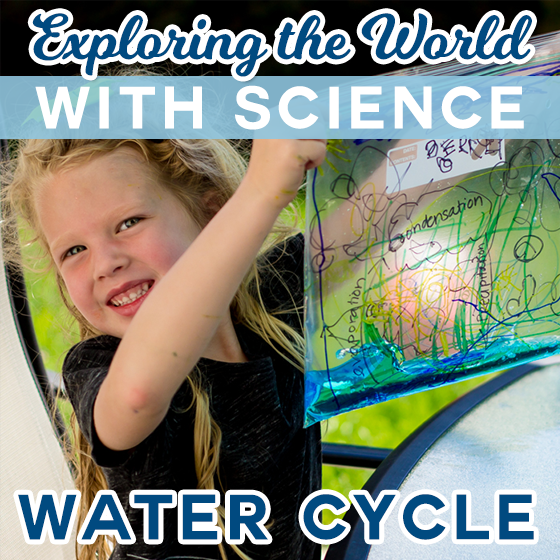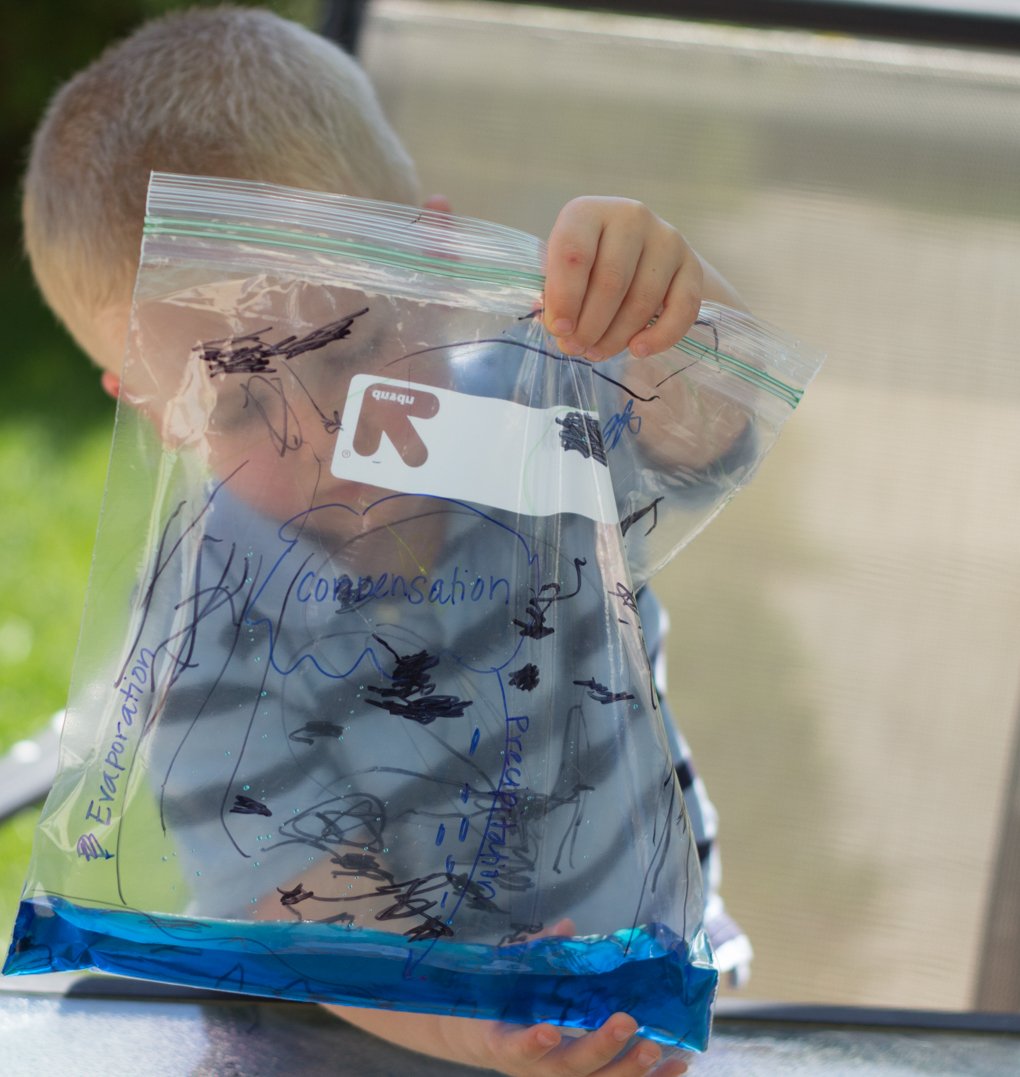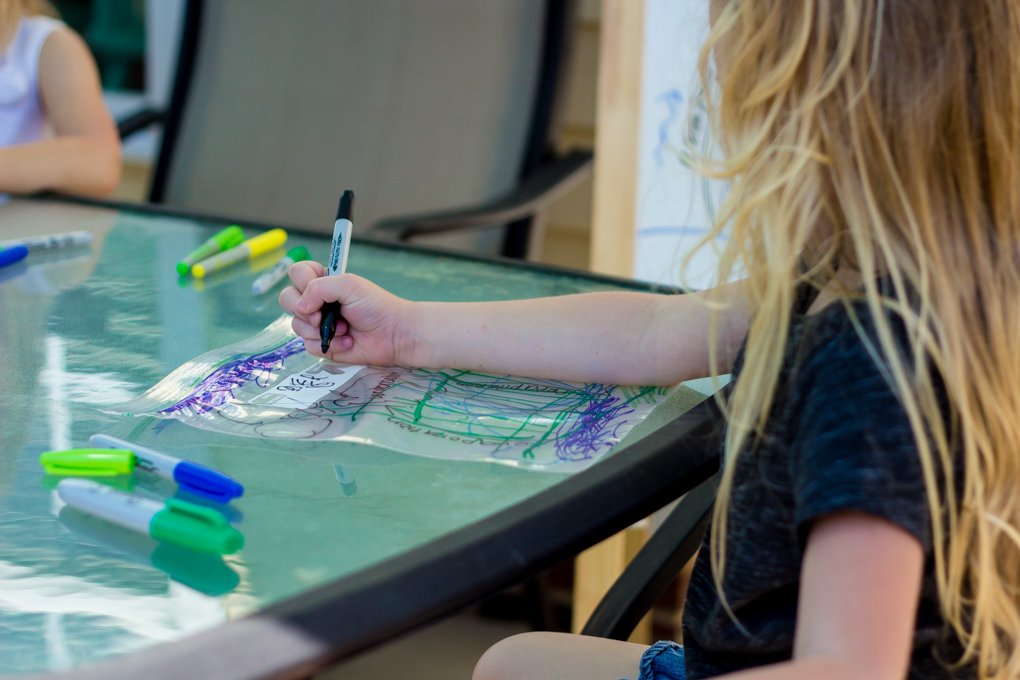Water is all around us. It affects every facet of our lives. We need water for survival; 80% of our bodies are made of water. But where does water come from? The warming of spring and summer provides the perfect time to get out and explore the water around us. While we are enjoying the lazy days on the lake or the rushing waves of the ocean, stop to take a few minutes to educate your little one on the importance of water and where it comes from.
 The Scientific Method
The Scientific Method
Purpose – What do you want to learn about?
Hypothesis – What do you think will happen?
Procedure – How will you arrive at your results?
Results – What actually happened?
Conclusion – Was your hypothesis correct?
Experiment Time

Introduce the Topic
The Water Cycle is the flow of water from bodies of water on the Earth, to the atmosphere and back to the ground again. The sun is an important factor of the water cycle because as water is heated up in lakes, rivers, or the ocean, it begins to evaporate. Evaporation is the change that occurs when liquid water is heated into a gas. High in the atmosphere, the water condenses into clouds. Clouds are formed by millions of tiny particles of water vapor. Precipitation occurs when water falls back to earth in the form of snow, ice, hail, or rain. The cycle continues over and over.
A great activity to start the teaching process off would be to draw out the water cycle. Videos can be another helpful tool to explain the water cycle.
Supplies
- Plastic baggie
- Blue food coloring
- Sharpie
- Tape
- Window
Insert the Scientific Method

Purpose
To understand how the water cycle works
Hypothesis
Ask your child what they’ve learned about the water cycle. What were the stages? What do they think will happen when you place the baggie in the window? What part of the water cycle will this represent? Jot down what they say so you can compare what they thought would happen and what actually does happen.
Procedure

- Label the plastic bag with the water cycle. The bottom of the bag should be labeled as a body of water (river, ocean, or lake). In the corner draw a sun. Next, draw an arrow pointing up and label this evaporation. Draw clouds in the sky and label these as condensation. Finally, draw an arrow pointing down and label it as precipitation (see picture for guidance).
- Next, add water to fill the bottom 1/4 of the bag.
- Add a few drops of blue food coloring.
- Use painters tape to stick to a window.
- Wait and observe.
Results
Check in a few hours or the next day and you will see water droplets collecting as condensation at the top of the bag. Press on the droplets and they will fall back down as precipitation. Repeat this process as much as your child wants to represent the constant flow of water within the water cycle.
Conclusion

Ask your child concluding questions about the water cycle. What did they learn? Why would it be important for our water to stay clean? How is water recycled? Just get them thinking and looking critically at the world around them.
Photo Credit: Ashley Wells
Sources: Center for Educational Technologies








































